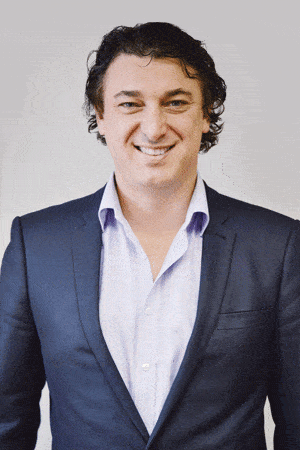It wasn’t too long ago that a coffee chain’s strategy in setting up a new store was relatively straightforward. Come up with a winning store design and replicate it in as many prime real estate positions as you can – wherever the market is right. It’s what Jeffrey Young describes as the “cookie-cutter” approach to franchising and for years the public could walk into any Starbucks, Costa Coffee or CBTL around the world and know exactly what to expect.
“Essentially, they were replicating the same experience,” explains Young. “The whole marketplace became a land grab for sites to put up stores. The public started thinking it was trendy to be walking around with a cup of coffee and it became even cooler to be holding a brand like Starbucks.”
These days, you’ll be hard-pressed to find someone walking around with a Starbucks labelled coffee in London. Not because of a lack of interest, but because earlier this year, the company took the name off its corporate logo. Walk into a few of the company’s new locations in London and you may even struggle to recognise the café as a Starbucks. The design of new Starbucks locations are borrowing from their surrounding environment, taking on the feeling of local neighbourhoods.
Starbucks, it would seem, has been moving away from the cookie-cutter, heavily branded approach. As Young explains, in many markets the days of the branded café are numbered. Recent developments in the coffee industry have seen the rising popularity of independent cafés. Coffee has emerged as more than just a morning beverage hit, but a careful craft where the barista is king.
“What we’re seeing is that coffee is starting to become more personal,” says Young. “Whereas before we just got our coffee from someone working at the café, baristas are now proud to call themselves baristas.”
The movement towards independent, specialty coffee is most commonly known throughout the industry as the third wave scene. The first wave saw coffee as no more than a morning caffeine kick and the second wave welcomed major brands that elevated the status of coffee as a beverage to be appreciated. The third wave, however, is following larger Western societal trends of moving away from big brand names, to reconnect with personal craftsmanship.
The message that consumers are craving a personal approach is being heard loud and clear by the chains and Young says major ones like Starbucks are changing business models to embrace this scene and ensure they aren’t left behind. Young says that the design of their stores is probably the most apparent indication of this trend. Costa Coffee has moved towards more natural woods, while Starbucks locations are using reclaimed materials. Starbucks is also moving away from hidden countertops and towards store layouts where the public can see and interact with the barista behind the machine.
“No two Starbucks need to be the same anymore,” says Young. “They’re looking to create a more individual experience. New stores are blending into the neighbourhoods where they’re located.”
Another embracement of the third wave scene is the inclusion of the flat white coffee on beverage menus. Stemming from the craftier coffee cultures of Australia and Portland in the United States, major chains are adding the flat white onto their boards, while also training their staff in latte art, to match up to these sophisticated coffee cultures.
Starbucks has started offering a ‘special reserve’ single estate coffee and introduced pour overs. At the London Coffee Festival that took place last
April, Young says these pour overs were well-received and the number of customers looking for higher quality coffee has grown beyond the few higher end, coffee-connoisseurs and out into the general public, who are all looking for that more personal approach. In this regard, Young warns it would be a mistake to think there is no room for coffee chains in the third wave scene. “You need to be careful in assuming that an outlet chain is necessarily impersonal,” says Young. “Some chain stores have fantastic managers, they know their customers by name and there’s no reason why they shouldn’t. Even with these independently owned chains, many of the owners are not in the shop. It becomes the staff who are key to ensuring this kind of interaction – and that’s all about the kind of culture you create in that store.”
Chain stores, Young says, are focussing their efforts on ensuring their staff establish the right kind of atmosphere. At Pret-a-Manger, Young says they call it the “Freddy Mercury” experience, where managers encourage staff to give the same kind of over-the-top, enthusiastic experience to their customers as the musician did at his concert in 1988. At Starbucks, community programs and charities help give staff the feeling that they’re part of something larger.
As these strategies succeed and the brands become increasingly popular as they ironically de-brand, Young points to a few dangers. The biggest threat he says these larger companies face is the danger of falling into patterns of complacency and ubiquity.
“These chains are well aware their customers want them. But, if a brand is not fresh, it’s no longer wanted. Managers and decision-makers can too easily fall into the trap of saying: ‘Oh, wouldn’t it be easier if we just did the same in every store.’”
Young warns that this could lead to disaster in the context of today’s third wave scene. With customers shying away from mega-corporations, this will naturally be the most challenging for larger, recognisable businesses. “It’s tough as a chain, because you’re already trying to standardise things behind the scenes.”
Those companies that embrace the scene, however, will be rewarded, as Young points to the demand for coffee continuing to indicate a steady rise. Even where economies are floundering, the demand for coffee is such a ritualistic part of daily life that he doesn’t anticipate any decrease in demand.
Marketing
Coffee chains and the Third Wave scene: The end of the cookie cutter?

